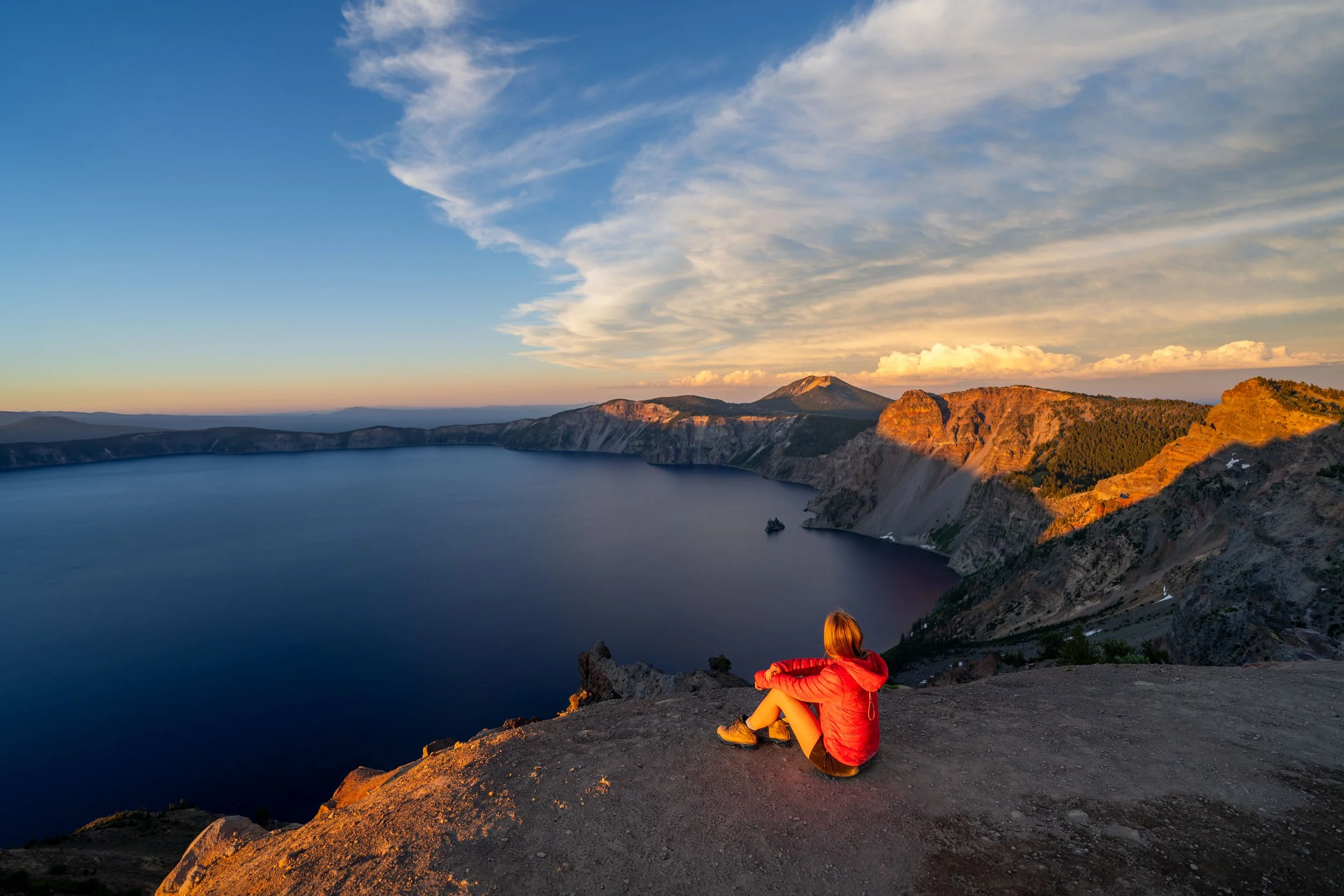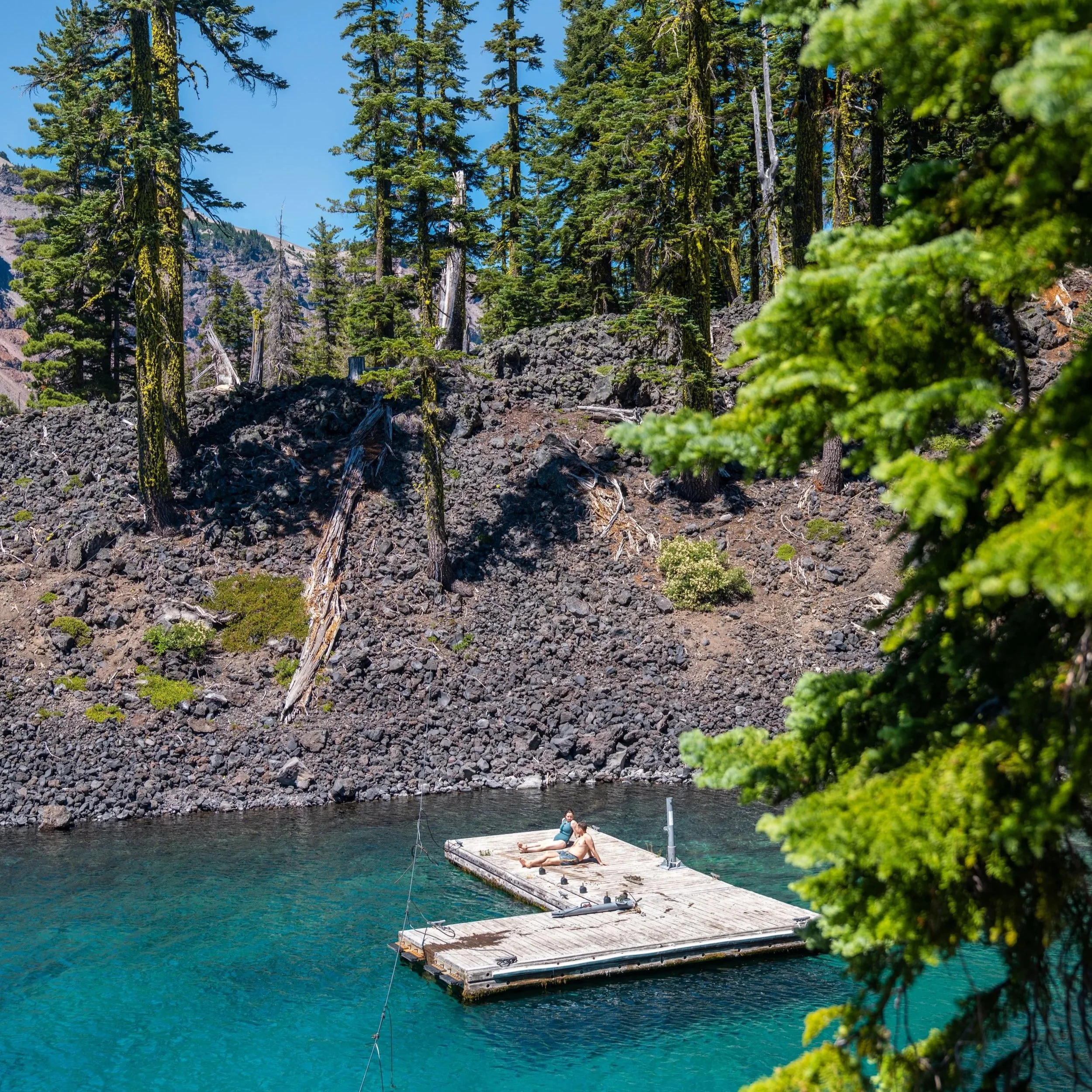Hiking the Raven Trail in Crater Lake National Park
Distance (Roundtrip): 2.0 miles / 3.2 km
The Raven Trail in Crater Lake National Park is a winter-only day hike that begins at the Steel Visitor Center and climbs to the rim of Crater Lake near the base of Garfield Peak.
I say 'winter-only' because the Raven Trail truly doesn’t exist during the summer months when Rim Drive is open to the public, as the trail is simply a snowshoe trail that follows a series of markers on the trees to guide hikers from the visitor center to the rim of Crater Lake.
That said, hiking to Crater Lake with snowshoes or cross-country skis is essential to make it up the Raven Trail—and be mindful to treat the snowshoe and ski trails separately. Skiers certainly don’t like hikers walking on either trail.
All this to say, there are a number of things to be aware of before visiting Crater Lake during the winter months, which can be trickier to plan than it may initially seem.
What to Expect in Crater Lake During the Winter?
If you decide to visit Oregon’s only National Park during the winter, here are some things you can expect.
Winter in Crater Lake National Park could mean anywhere from early fall into the beginning of the summer, which is also the time of year that Rim Drive is closed.
The National Park Service may require visitors to carry tire chains, and it’s best to check for any park updates before visiting.
The Raven Trail, which parallels the steep slopes of Garfield Peak, is avalanche-prone, and the National Park Service recommends that each party carry a beacon to stay safe on the short trail.
To keep the park open year-round, the National Park Service does a great job at plowing the south entrance off Highway 62, known as the Crater Lake Highway, leading to the Steel Visitor Center.
Crater Lake is only visible from the end of the Raven Trail about 50% of the time, which is why it’s best to check the Crater Lake webcams before making the long drive up to the park.
To read about the current conditions, I strongly recommend checking the official National Park website for updated winter information.
National Park Service: Crater Lake National Park
Raven Trailhead Parking
During the winter, Munson Valley Road—the road from the south entrance off Crater Lake Highway—is the only road in Crater Lake National Park that is cleared in order to reach the Steel Visitor Center, which is exactly where the Raven Trailhead parking is located.
That said, always check the local forecast before making the drive up to Crater Lake, as weather outside of the Cascades, such as in Bend or along the I-5, will be drastically different from the park.
Google Maps Directions: Steel Visitor Center
Winter Hiking Checklist - Crater Lake
Here is a complete list of must-have things that you will want for any winter hike in Crater Lake National Park.
Hiking the Raven Trail to Crater Lake
The Raven Trail begins just across Rim Drive from the Steel Visitor Center parking area, adjacent to the gate that remains closed during the winter months.
Again, come prepared with snowshoes or cross-country skis, as walking in the deep snow can be very tricky and impractical after a recent storm.
If you don’t have snowshoes, I can say that the ones I have linked below are the exact same ones that I used on my three-week Denali expedition, which are more than sufficient for the Raven Train in Crater Lake National Park.
After leaving the Steel Visitor Center, the Raven Trail should be fairly easy to follow, granted that it hasn’t snowed recently. However, if you’re having a hard time finding the correct route, look for the trail markers on the trees. They lead all the way from the visitor center to the rim of Crater Lake.
On a different note, there is one small section on the Raven Trail, almost directly below Garfield Peak, that’s prone to avalanches.
This is why the National Park Service recommends carrying an avalanche beacon, and if the conditions and/ or the Park Service tell you it’s not safe, I recommend trying another day. Avalanche training is not something that’s secondhand knowledge for most people, meaning that help is likely very limited on the Raven Trail in the event of a slide.
This is to say, I have seen visitors make the long, slow drive up to Crater Lake during the winter, only to turn around after talking with the ranger at the entrance station because they felt they were unprepared.
However, if you take the list above seriously, there’s no reason that you shouldn’t be able to see the lake on a clear day!







